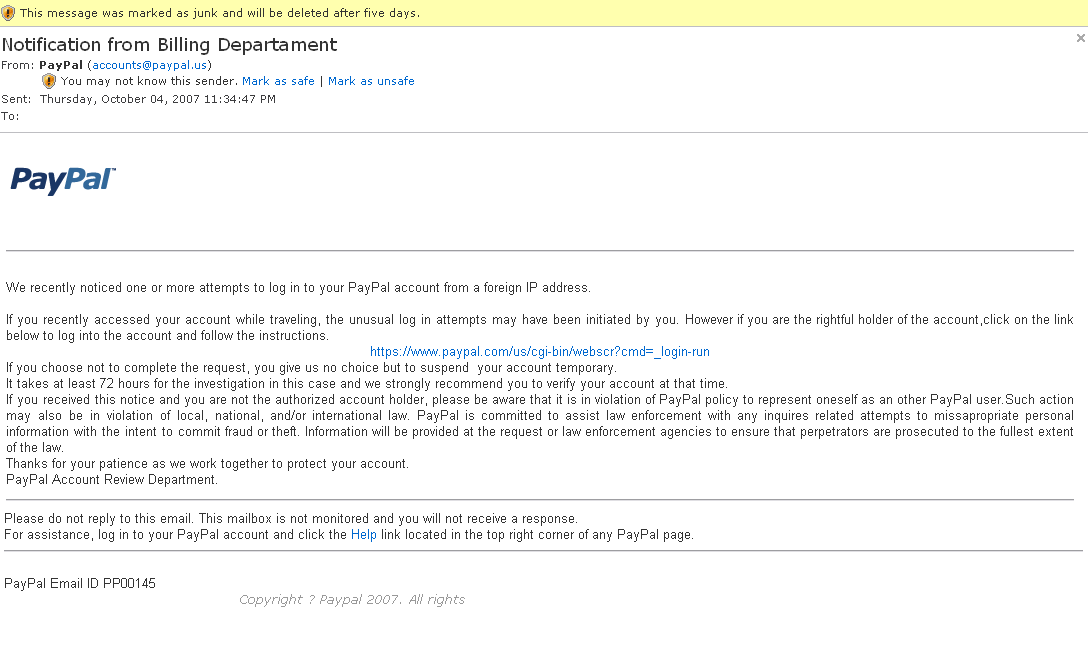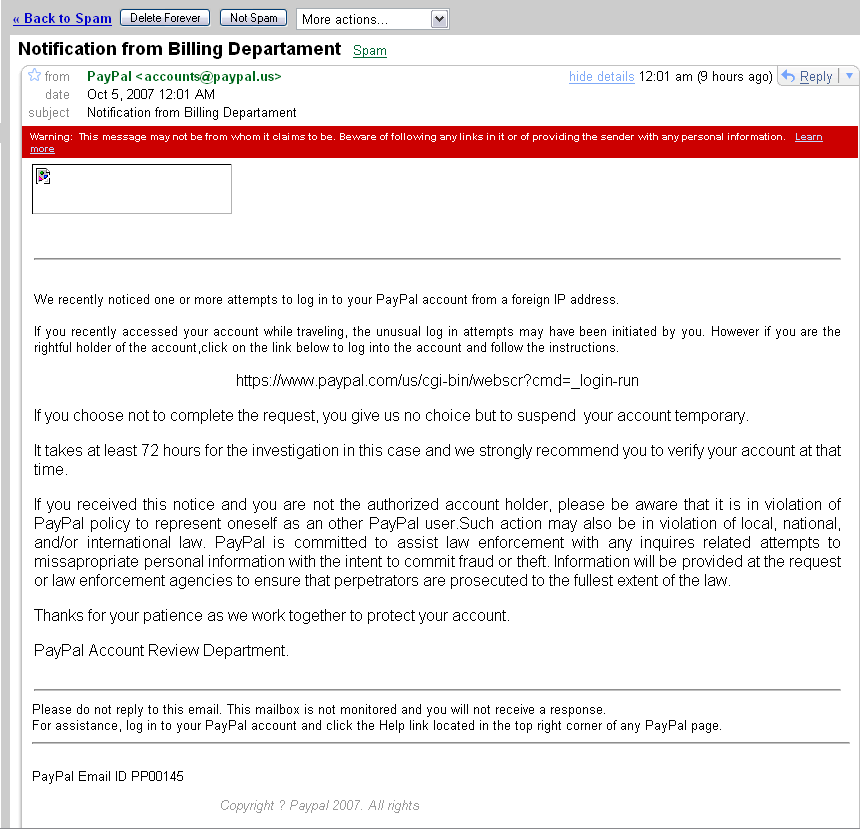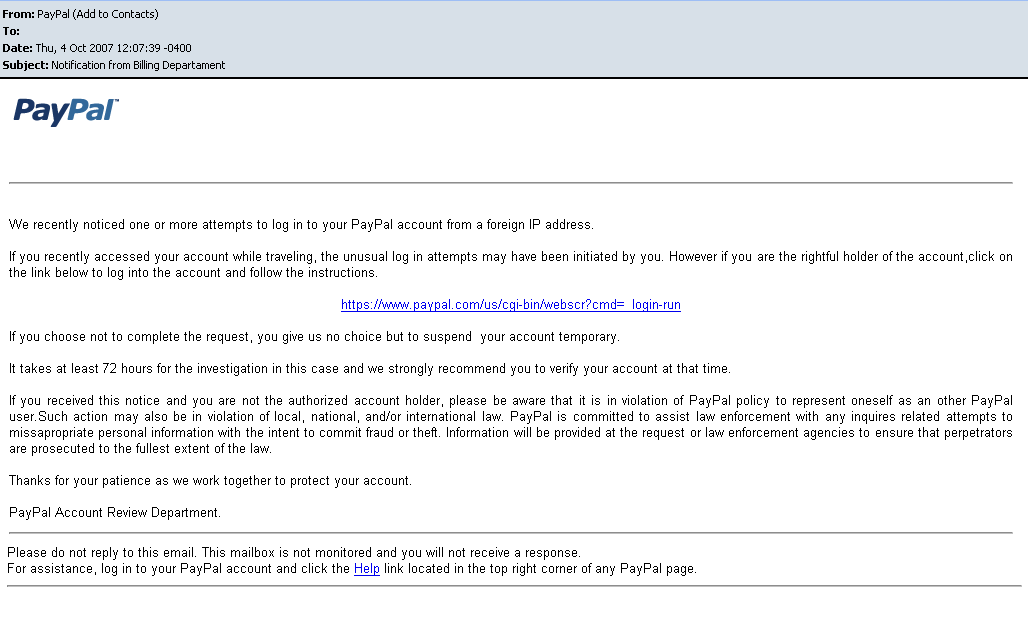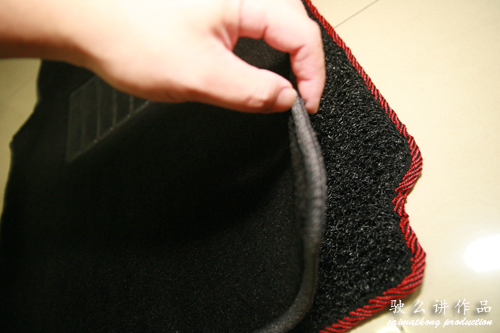Beware of PayPal Fraudulent Emails
I received paypal Fraudulent Emails few times and it’s to almost all of my email. My Hotmail, Gmail and even company’s email. It’s not only Paypal phishing scam that you have to beware of, but also other bank or financial web phishing scam.

This is from Hotmail

This is from Gmail

This is from paypal itself that educate about the fraudulent emails of spoof email.
What to watch out for
1. Generic greetings. Many spoof emails begin with a general greeting, such as: “Dear PayPal member.”
2. A false sense of urgency. Most spoof emails try to deceive you with the threat that your account is in jeopardy if you don’t update it ASAP.
3. Fake links. The text in a link may attempt to look valid, then send you to a spoof address. Always check where a link is going before you click. Move your mouse over it and look at the URL in your browser or email status bar. If the link looks suspicious, don’t click on it. And be aware that a fake link may even have the word “PayPal” in it. more
What is Phishing?
Phishing is a form of fraud designed to steal your identity. It works by using false pretenses to get you to disclose sensitive personal information, such as credit and debit card numbers, account passwords, or Social Security numbers.
One of the most common phishing scams involves sending a fraudulent email that claims to be from a well-known company. Phishing can also be carried out in person, over the phone, through fraudulent pop-up windows, and websites. more
So when you receive any email from bank, confirmed with the bank and check wither it’s a scam or not. I repeat, do not click on any link in the email that look suspicious. When u do that, you will eventually leak your information to the culprit.
There’s a way that I always check whether it’s from the real bank or not. Before you click on the link, you can actually see the real link behind by mouse over or view source. By doing that you can also check whether it’s pointing to the bank that sent you the email or pointing to other pishing website. So when you see a link like paypal, it’s actually bringing you to another website that look exactly the same but it’s not the real bank. So beware.
Another way that you can check is, when you reach the website thru the link in the email, try to login using wrong login name and password, if it’s logged in then you know it’s a pishing scam, if not than it should be safe.
So the safer way is, bookmark you the bank website and every time want to visit, just click on your bookmark =)

 6,848 views
6,848 views


Trackbacks/Pingbacks